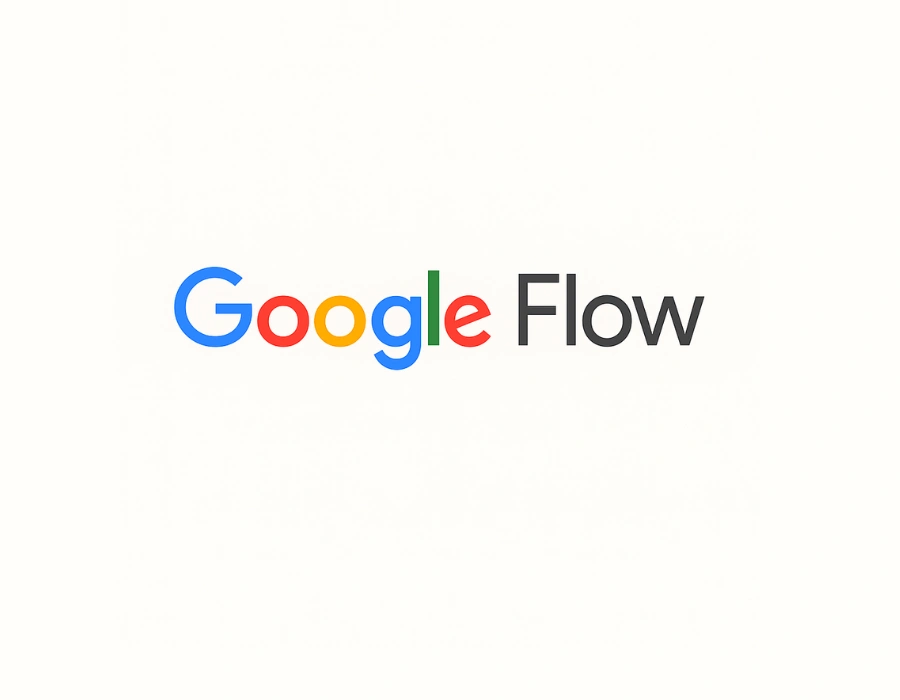Imagine crafting a cinematic scene with just a few words—no cameras, no actors, no expensive sets. That’s the promise of Google Flow, the latest AI-powered filmmaking tool unveiled at Google I/O 2025. Built atop Google’s most advanced AI models—Veo 3, Imagen 4, and Gemini—Flow is poised to revolutionize storytelling for creators worldwide
What Is Google Flow?
Google Flow is an AI-powered filmmaking studio that lets creators produce cinematic-quality video clips from simple text or image prompts, combining Google’s latest generative models—Veo 3 for video, Imagen 4 for images, and Gemini for language—to streamline storyboarding, scene assembly, and audio synthesis into one seamless workflow.
Why Google Flow?
Imagine you’re an indie filmmaker on a shoestring budget. Traditional shoots cost tens of thousands in equipment, locations, and crew. With Google Flow, you can prototype and even finalize short scenes—complete with realistic physics, natural lighting, and lip-synced dialogue—using only a laptop and your imagination. This democratization of video production:
- Lowers Barriers: Removes the need for expensive cameras, actors, and studios.
- Speeds Iteration: Go from idea to clip in minutes, not days.
- Boosts Creativity: Experiment freely with settings, characters, and camera moves.
By making high-end production accessible, Flow empowers storytellers worldwide to focus on narrative, not logistics.
Three Pillars of Flow
Veo 3: The Video Engine
- Text & Image Ingestion: Converts your prompts (“rain-drenched neon street”) into moving images at up to 16:9 aspect ratio.
- Physics-Aware Rendering: Simulates natural motion—raindrops, cloth drapes, and gravitational effects—so animations feel grounded in reality.
- Integrated Audio: Generates ambient sound, voice-over, and music that sync perfectly with visuals.
Imagen 4: The Asset Sculptor
- High-Res Still Frames: Crafts detailed elements (“rustic wooden cabin,” “glowing embers”) that serve as building blocks for your clips.
- Style Consistency: Ensures characters and objects maintain the same look across multiple scenes, avoiding jarring mismatches.
Gemini: The Conversational Director
- Natural-Language Understanding: Parses casual instructions (“pan out as the sun rises”) into precise generation commands.
- Prompt Refinement: Suggests enhancements (“add golden-hour lighting”) to boost visual fidelity and narrative impact.
Together, these models form a unified pipeline that translates imagination into eight-second cinematic clips, editable and exportable in common formats.
How to use Google Flow: A Step-by-Step Guide
- Prompt Entry
- Type or upload a text/image description.
- Gemini offers optional clarifications—e.g., “Do you want close-up or wide-angle?”
- Asset Generation
- Imagen 4 creates “ingredients” (objects, characters, backgrounds).
- Assets are organized in Flow’s Asset Manager for reuse.
- Scene Construction
- Veo 3’s Scene Builder stitches assets into a seamless clip.
- Drag sliders or speak commands to control camera movements (zoom, pan, dolly).
- Audio Synthesis
- Veo 3 generates synchronized sound effects, dialogue, and music tracks.
- Fine-tune volume levels or replace tracks via intuitive audio controls.
- Review & Iterate
- Preview your clip, adjust prompts, swap assets, or tweak audio.
- Each change spawns a new “version,” preserving earlier edits.
- Export
- Render in MP4 or ProRes for import into editing suites like Premiere Pro or DaVinci Resolve.
This modular pipeline keeps every creative choice under your control—no hidden black boxes.
Real-World Examples & Expert Insights
- Independent Filmmaking:
Fianna Studios prototyped their sci-fi short “Echo Station” entirely in Flow, cutting pre-production costs by 65% and reducing turnaround time from weeks to days. - Advertising:
A major ad agency used Flow to generate 20 concept variations for a 30-second spot in under an hour—what once took a week of on-set filming.
“Flow bridges the gap between concept and reality,” AI architect at DeepMind. “It embeds audio, physics, and editing into one generative pipeline, redefining the filmmaker’s toolkit.”
- Education:
Film schools integrate Flow into curricula, letting students experiment with cinematography principles without the overhead of camera rentals or studio time.
These success stories highlight how Flow accelerates workflows, reduces costs, and fosters innovation.
Key Features
Cinematic Controls
- Parametric Motion: Numerical or voice-driven control of camera paths.
- Continuous Shots: Seamless scene blending—no jump cuts.
Asset & Version Management
- Metadata Tagging: Automatic keywording (“sunset cityscape,” “alien biome”) for easy search.
- Non-Destructive Edits: Version history preserves every creative iteration.
Enterprise-Grade Infrastructure
- Vertex AI Integration: Scalable APIs, role-based permissions, and compliance (ISO 27001, SOC 2).
- Batch Rendering: Schedule large-scale render jobs on Google Cloud’s Kubernetes clusters.
Accessing Google Flow: Pricing & Availability
- Google AI Pro: Access Flow with Veo 2, standard-definition renders, and early Gemini features.
- Google AI Ultra: Full access to Veo 3, Imagen 4, high-definition (1080p) exports, and priority processing.
- Cost: $249.99/month (50% off for first three months).
Currently available in the U.S. for Pro and Ultra subscribers, with plans for global rollout in late 2025.
Ethical Considerations & Limitations
- Authenticity: As AI-generated content proliferates, verifying originality becomes crucial. Emerging watermarking tools (e.g., SynthID) aim to label synthetic media responsibly.
- Bias & Representation: Generative models may inadvertently reinforce stereotypes—best practices include diverse training data and human oversight.
- Cost Barriers: At $250/month, Ultra may be out of reach for hobbyists—Google plans to introduce lower-tier options later.
Balancing innovation with responsibility will define Flow’s long-term impact on storytelling.
What’s Next for Google Flow?
- Collaborative Editing: Real-time multi-user sessions in the cloud.
- Long-Form Generation: Beyond 8-second clips to multi-minute narratives with consistent story arcs.
- Third-Party Integrations: Plugins for top editing suites (Premiere Pro, Blender) to embed Flow content into existing pipelines.
With these roadmaps, Flow is set to evolve from a prototype tool into a cornerstone of AI-driven filmmaking.
Conclusion
Google Flow isn’t just another AI toy—it’s a paradigm shift. By bundling advanced generative models into an easy-to-use studio, it transforms how stories are crafted, from solo creators to major studios. Whether you’re sketching a storyboard or finalizing a trailer, Flow brings your vision to life at the speed of thought.
